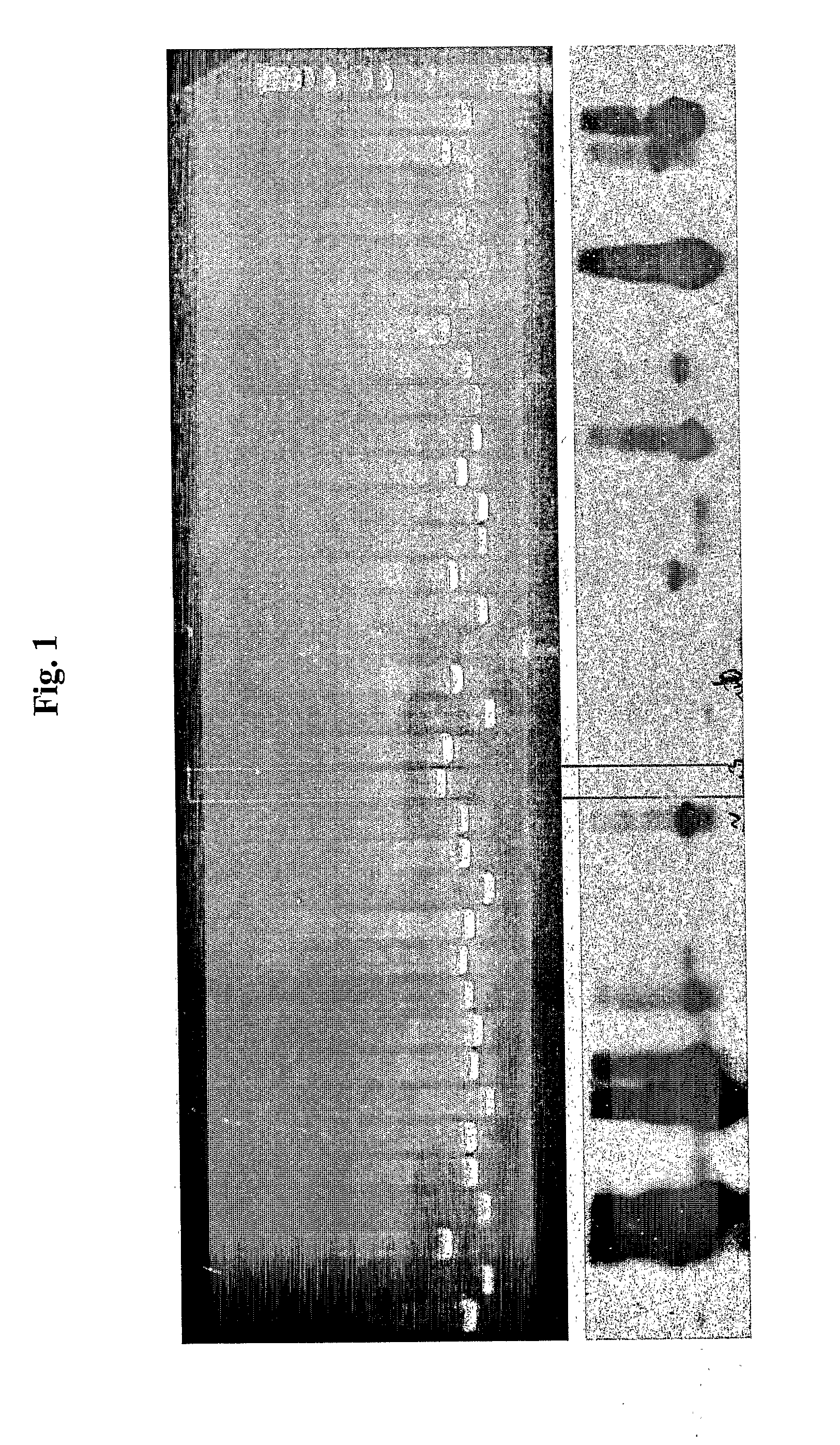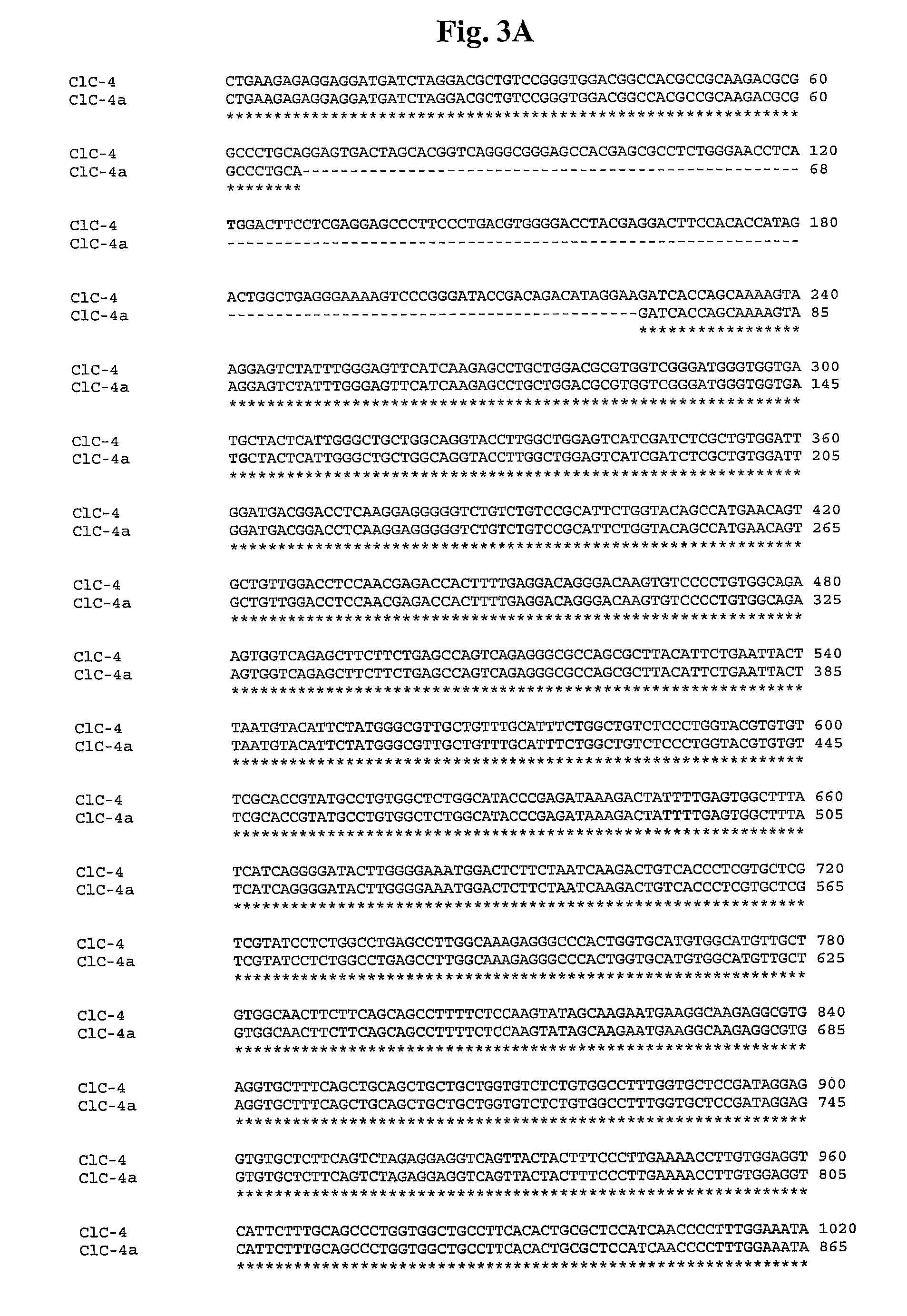Voltage-gated, pH-sensitive anion channel and its novel splice variant involved in taste sensation
a voltage-gated anion channel and a novel splice technology, applied in the field of voltage-gated, ph-sensitive anion channels, can solve the problems of insufficient knowledge of the molecular mechanisms underlying the transduction steps of taste, in particular in sour taste sensation, and the development of new flavors is based on incomplete knowledge, and many potentially taste active compounds need to be taken through exhaustive and difficult animal feeding studies or expensive human psychophysical tests. , to achieve the effect o
- Summary
- Abstract
- Description
- Claims
- Application Information
AI Technical Summary
Problems solved by technology
Method used
Image
Examples
example 1
[0208]The discovery of these two voltage-gated, pH-sensitive ion channels ClC-4 and ClC-4A was accomplished in two steps: (1) isolating the 3′-end cDNA fragment from a single taste cell cDNA library by differential screening of the library against non-taste cDNAs; (2) PCR amplification of ClC-4 and ClC-4A cDNAs from a mouse taste tissue cDNA library with PCR primers encompassing the entire coding regions; and PCR screening of a human fungiform (taste) cDNA library. In situ hybridization and immunohistochemistry have localized their transcripts and proteins to taste receptor cells. Electrophysiological recordings have characterized their anion selectivity and conductance in response to changes in voltage and pH.
Construction and Screening of a Single Taste Cell cDNA Library:
[0209]Circumvallate, foliate and fungiform papillae epithelium were isolated from young adult mice by enzymatic digestion (Ruiz C., M. McPheeters, and S. C. Kinnamon, “Tissue culture of rat taste buds,” in EXPERIME...
PUM
| Property | Measurement | Unit |
|---|---|---|
| Tm | aaaaa | aaaaa |
| temperature | aaaaa | aaaaa |
| temperature | aaaaa | aaaaa |
Abstract
Description
Claims
Application Information
 Login to View More
Login to View More - R&D
- Intellectual Property
- Life Sciences
- Materials
- Tech Scout
- Unparalleled Data Quality
- Higher Quality Content
- 60% Fewer Hallucinations
Browse by: Latest US Patents, China's latest patents, Technical Efficacy Thesaurus, Application Domain, Technology Topic, Popular Technical Reports.
© 2025 PatSnap. All rights reserved.Legal|Privacy policy|Modern Slavery Act Transparency Statement|Sitemap|About US| Contact US: help@patsnap.com



